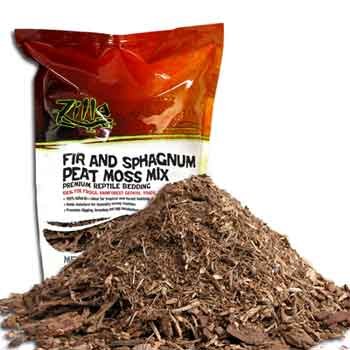Steps in Choosing Reptile Cage Substrate and Litter
The type of reptile litter, or substrate, you buy is going to be determined by the type of reptile that you have. There are many different types of litter for a reptile's tank, terrarium or cage. Some options include wood/bark chips, sand, soil, moss, carpet and pebbles.
Some reptile species do better with one kind of substrate than another. Some types of litter can even be harmful to a reptile or cause sickness or death. If a substrate consists of tiny pieces, it has to be digestible. It is very important to a reptile's health that it is provided the right litter.

When shopping for reptile litter, do your research done. If you have an iguana or other arboreal lizard, the substrate isn't that important because most of the time your lizard will be climbing in the cage.
Think carefully about the type of litter for reptiles that spend most of their time around the bottom of the tank. Reptilite bedding is a great option because it has big pieces that don't get eaten and is very absorbent. This low impact substrate also contains strontium and magnesium; while being free of silica and phosphates.
Bark chips are another reliable option, as the larger pieces are rarely eaten. Smaller reptiles might find this litter hard to walk on, however.
Sand like Vita-Sand by Zoo Med can be a good substrate for certain reptiles including hermit crabs and lizards because it is relatively easy to scoop out waste. There is one caveat; you have to make sure your lizard isn't eating the sand.
With all litters, you should monitor your reptile's behavior to make sure it is a healthy choice. At GregRobert Reptile Supplies you'll find a variety of different reptile litter options for all kinds of reptiles.
Labels: Cage Substrate, Reptile Supply






